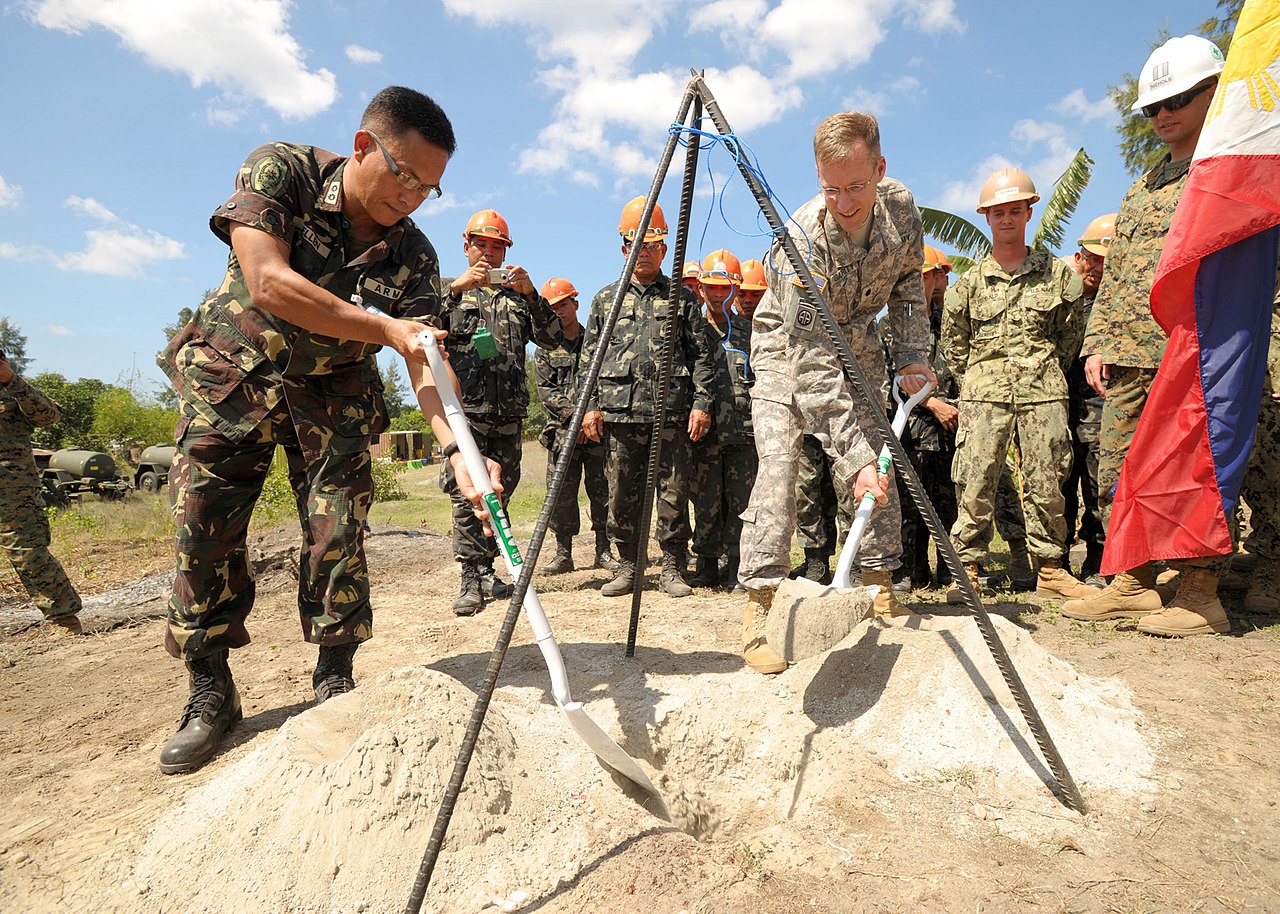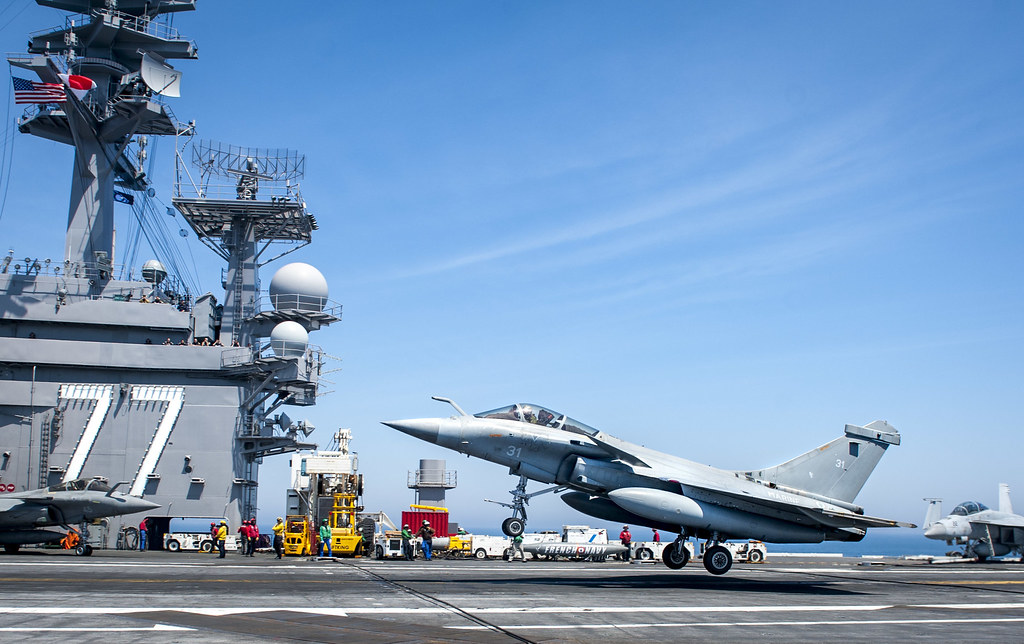As France’s potential troop deployment to Ukraine draws international attention, the nation has intensified its engagement in the Indo-Pacific region.
France’s heightened involvement is exemplified by its latest decision to take part in joint naval exercises with the Philippines and the United States. It is a move that is poised to exacerbate tensions in the already volatile waters of the West Philippine Sea (WPS).
Scheduled for the early part of the 2024 Balikatan exercises, the French Navy will join forces with the Philippine Navy, US Navy, Philippine Coast Guard, and US Coast Guard in what is termed a “group sail” in international waters.
The joint naval exercise will also mark the first time in nearly four decades that such exercises will extend beyond the Philippines’ 12-nautical-mile territorial waters.
The French Navy plans to deploy a frigate to participate in the naval exercises during the initial phase of the 2024 Balikatan maneuvers, slated to take place from late April to early May.

Colonel Michael Logico, the Balikatan executive agent, outlined the nature of the “group sail” maritime exercise, which is a “combination of division tactics, search and rescue, board and search and seizure exercises, gunnery exercises, qualifications, well deck operations, those are types of exercises so they will be moving from Point A to Point B.”
“We will be utilizing the western side of Palawan, extending beyond our 12 nautical miles so this is also a new thing…We’ve done group sails before…In previous exercises, we’ve been limited to just 12 nautical miles, now we are encouraging or we are venturing outwards,” he said.
The decision to conduct exercises in this manner comes as Chinese military and coast guard vessels continue to impede Philippine rotation and resupply missions in the region.
Despite the potential presence of Chinese vessels in the area, Logico said that the exercises are aimed at demonstrating combat readiness and deterring aggression. This year’s iteration will involve approximately 11,000 American soldiers alongside Filipino troops engaged in community assistance projects and other collaborative efforts.
“The message that we want to send is that we are serious about defending our territory, and we have allies,” he stated, underscoring the importance of the alliance between the Philippines, the United States, and now, France.
One of the highlights of the upcoming exercises is a sinking exercise off the coast of Laoag in Ilocos Norte, where joint military forces will simulate an attack on an “enemy ship,” as the EurAsian Times reported earlier.
Australia and Japan will not be actively involved in the naval exercises, but they will be sending observers to witness the event.
Expanding Footprints Of The French Military
As tensions continue to simmer in the West Philippine Sea, the participation of France, alongside longstanding allies, signals a unified stance against perceived maritime encroachments, particularly by China.
France views itself as a significant player in the Indo-Pacific region, citing its unique geographical position and territorial holdings.
With borders shared with five independent states in the Indian Ocean and 12 in the Pacific Ocean, coupled with its administration of overseas territories and a sizable French expatriate population in the Indo-Pacific, the country asserts its status as an “Indo-Pacific resident power.“
The nation’s interest and active involvement in the region are primarily driven by its territorial holdings, which include key territories such as New Caledonia, French Polynesia, Wallis and Futuna, and Clipperton Island, alongside Reunion Island, Mayotte, and the French Southern and Antarctic Lands.
Collectively, these territories constitute the second most substantial exclusive economic zone globally, providing France with important economic and strategic interests in the Indo-Pacific.

As the Chinese military expands its presence in the Indo-Pacific region, France has become increasingly concerned about safeguarding freedom of navigation both at sea and in the air.
The country said that it is committed to upholding this fundamental principle through diplomatic dialogue and discussions. However, it also asserts its readiness to utilize its armed forces, either independently or in collaboration with partners, if necessary, to ensure the preservation of freedom of navigation in the region.
The increasing deployment of the French military in the Indo-Pacific region as a countermeasure against China reflects the strategic initiatives led by President Emmanuel Macron.
Concurrently, Macron’s pursuit to project dominance in Europe is evident amidst shifting political dynamics, both internationally and domestically.
In late February, President Macron declared France’s willingness to assist Ukraine by sending NATO military forces despite the lack of unanimous agreement within NATO on the issue at that point.
Subsequently, Macron provided clarification, stating that French troops could potentially be dispatched to Ukraine in the event of renewed Russian attacks on cities such as Kyiv or Odesa.
However, Macron’s stance faced opposition from several NATO member states. Germany, the Czech Republic, Bulgaria, Poland, Spain, and Italy were among the countries that expressed disagreement with the idea of sending troops to Ukraine.
- Contact the author at ashishmichel(at)gmail.com
- Follow EurAsian Times on Google News




